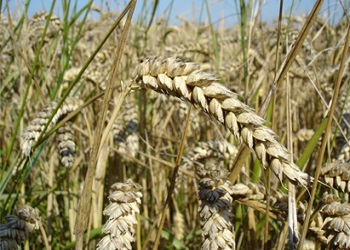- Details
Between August 2014 and May 2015, international wheat prices declined by 18%, rice prices dropped by 14% and maize prices declined by 6% (World Bank, 2015). This decreased prices are expected to be transmitted from international to domestic consumer prices of food items (e.g., wheat flour, bread). However, there are many factors that hinder this transmission process. Several studies analyzed price transmission from international to domestic markets (e.g., Acharya et al. 2012; Götz 2008). In particular, after so called food crises of 2007–2008 and 2010–2011 many studies were focusing on the role of integration of domestic markets to international markets, the price transmission of food prices between large markets and small ones. These crises made interesting to understand and investigate the price relationships in a main food products more thoroughly. Also, to study the implications for food security and livelihoods in food-insecure countries (IFPRI, 2016).
- Details
Unless its glorious past during the Soviet Union, the Georgian tea sector rebounded in the late 1990s and early 2000s, yet only partially as the economic and political stability of the post-independence period left a mark on the overall productivity of the sector.
Today, the sector could play a role in alleviating rural poverty in western Georgia by providing families with steady jobs and livelihoods if it will be revived. The Georgian government and donor communities aim to support this sector and the tea cooperative development is one of the ways chosen by them.
According to this study, the cooperatives could benefit the most if they focus on the high quality tea production (e.g., organic tea). Also, tea cooperatives (and their members) could benefit more if they invest in proper branding, marketing and promotion at the second level of cooperation.
- Details
A dramatic y/y decline (44%) in Georgia’s 2015 exports to Armenia was the subject of a study by ISET-PI and the German Economic Team (GET). Our goal was to understand the extent to which this slump resulted from Armenia’s agreement to join the Eurasian Economic Union in 2014 (as part of this agreement, Armenia applied new trade barriers on imports from non-EEU countries in 2015).
An alternative explanation concerns the change in the terms of trade with Russia and Armenia. With the Russian ruble sharply depreciating in the course of 2015, Russian non-oil products became much more competitive in international markets, including Armenia.
The study overviews Georgia’s export structure and the key changes it undergone in 2014-15. The lion’s share of the decline in Georgian export to Armenia is found to be caused by a sharp contraction in car re-exports (-69% y/y). The paper goes on to analyze possible future changes in the trade regime between the two countries and their effect on Georgian exports.













